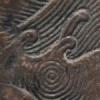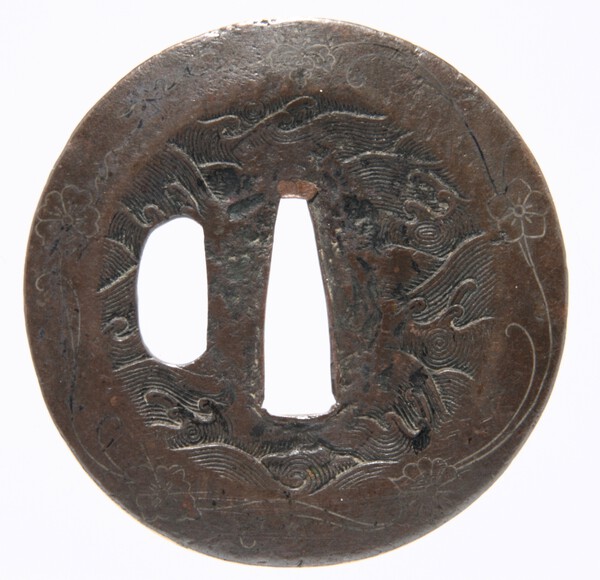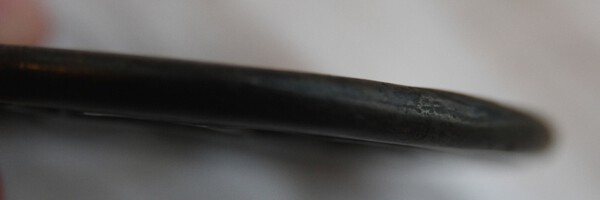-
Posts
79 -
Joined
-
Last visited
Content Type
Profiles
Forums
Events
Store
Downloads
Gallery
Everything posted by growlingbear
-
Brian, I've sent you an email with details and links for all the files. All of them are worth keeping as the text is legible in all, just some have quite poor quality pictures. Chris, it would be great if there was something in the works for the files that currently are only available from computer access within the NDL. There are a whole load of books that I'd love to get electronically but are only accessible from within the library at the moment. Glad to be of help, James
-
Brian, Chris, The NDL online database is indeed a great tool. Over the last few months I have downloaded a number of books, and done some processing on them to make them more manageable (pinned the multiple files together, removed the blank spaces around the edges and tried to do text recognition on them using Acrobat) - I am happy to share the files for the benefit of everyone. They range in size from a couple of megabytes to nearly 100MB and the quality is variable; some are very good, others are quite poor. Perhaps it would be possible to upload these in the articles section of the NMB? My interests are more on the fittings side, so the list below is heavily skewed towards that. I haven't searched thoroughly for sword books so I'm sure there are many more of use. I'm not 100% sure on all of the romaji names, so I have also included the kanji (which you can also use to search here: http://dl.ndl.go.jp/?__lang=en). The files I have are: Nihon Toko Jiten 日本刀工辞典 (Fujishiro), Koto and Shinto Hen Shinto Shu, Hamon to Meiji 新刀集-刃文と銘字 (Fujishiro) Choshu Tsuba 長州鐔 (Soemon) Akasaka Tsubako Roku 赤坂鐔工録 Higo Kinko Roku 肥後金工録 (Nagaya) Kinko Kantai Hikketsu 金工鑑定秘訣 (Yoshiaki) Nihon Soken Kinkoshi 日本装剣金工史 (Kuwabara) Nihon Tsuba toko roku 日本鐔刀工録 (Soemon) Senso to Tsuba 戦争と鐔 (Nagaoka) Soken Kinko Zufu 装剣金工図譜 (Wada) Tagane no Hana (4 books) 鏨迺花 Toban Shokan Kotetsu 刀盤賞鑑口訣 (Kanzan) Tsuba 100 shi Kougei zuan 鐔百姿 - 工芸図案 (Okuma) Yokoya Somin 横谷宗珉 (Soemon) Let me know if there is interest in uploading these to the NMB, otherwise I will look into other file sharing sites so they can be accessed by everyone. In terms of searching, I have found it most useful to search using author names, and for specific book titles rather than just for terms like nihonto or tsuba. There is an advanced search button on the website (which allows specific search for keywords, titles etc) which is in English and quite user friendly - it is easy to download 20/40 page (I can't remember) sections of the books and then stitch these together later. Cheers, James
-
-
Hi Kevin, I'd certainly recommend the new book by Markus - cheap and easily available, and you can get it as an ebook which personally I find extremely useful. Haynes is good but don't forget it's just a list of metalworkers with some detail about their life and work, it doesn't contain any images of mei but rather references other books, especially those by Wakayama. Cheers James
-
Thanks both. The tsuba is not actually mine, I was asked to post this by a friend. Thanks Morita-san for the link to the auction page -any idea who wrote the hakogaki? I'm fairly sure the auction description only says it's an Akasaka tsuba, no other details. Thanks, James
-
Hi all, This is way beyond my skills: Can anyone help with a translation? Even the name of the person who wrote it would be good. The only characters I can make out are Akasaka (Top right) and tsuba (top of the next column along) but I'm not even sure of these. Thanks in advance! James
-
Hi Florian, You might want to check out this thread on Kishu Teimei tsuba if you haven't already: viewtopic.php?f=2&t=16660 In Chris' scan number 3 (download/file.php?id=46781) there is a very similar tsuba to yours. James
-
As has been mentioned previously on the NMB, the Ashmolean Museum in Oxford holds the Arthur Church collection of tsuba. Unfortunately, these are not on public display (the museum only has three or four tsuba in the galleries), but fairly recently the entire collection has been photographed and put online - over 1200 tsuba! The collection can be found at this link: http://jameelcentre.ashmolean.org/collection/7/10237 It is organised as a kind of online catalogue which isn't the easiest way to look through, and the tsuba generally have only photos of one side. The catalogue was written in 1929 as well, so some of the information and attributions may be quite dated. You can zoom into the pictures by clicking on the "details" button (it took me a while to find this, and is quite useful...). Hopefully this is of interest - I think it is a shame these tsuba are not on display, but at least it is possible to now see some of them through the photos. James
-

Ko-kinko tsuba - what is this shape/profile called?
growlingbear replied to growlingbear's topic in Tosogu
Thanks everyone for the interesting discussion. Ford, I had wondered if the rim was a later addition - it certainly looks quite different in style from the waves. The silver inlay is pretty much completely intact, there is also the remnants of gold plating/inlay round the outside of the rim. The lacquering is also interesting. It looks like the complete surface may have been lacquered at some point, you can see in the first photo the black lacquer that is over both the waves and the silver inlay so I think Alex raises a good point. I probably agree with John, it seems like the inlay was added (either to an older tsuba or by the original manufacturer), then the tsuba lacquered later in its life, and the lacquer finally worn off to leave it in its current state. Anyway, glad it is of interest. James -

Ko-kinko tsuba - what is this shape/profile called?
growlingbear replied to growlingbear's topic in Tosogu
Hi John, Yes there is definitely black lacquer on the tsuba. This is what I don't want to damage - the dirt is the yellowish stuff in the last photo which looks like oxidised wax that has got stuck in the grooves. Thanks for the help, I have found a couple of other examples of the same shape - this is a good photo showing a similar shape tsuba: http://images1.bonhams.com/image?src=Im ... 1-33-1.jpg http://www.bonhams.com/auctions/15678/lot/272/ James -

Ko-kinko tsuba - what is this shape/profile called?
growlingbear replied to growlingbear's topic in Tosogu
Thanks John. I thought goishigata meant the while plate was convex? On this tsuba the centre where the waves are carved is almost dished in towards the nakago ana. James -
Hi all, hope you can help with my tsuba question. This tsuba is deep brown and appears to be made of copper/yamagane, with wave carving in the centre and then inlaid silver patterns around the edge. I think it is attributed to ko-kinko, but would welcome any other opinions. What I would like to know is what this type of shape/profile is called. Right at the edge is very thin, around 1.5mm and this then raises to around 3mm, and drops again to 1.5mm at the nakago ana where the waves are carved. It's very difficult to catch in a photo, and doesn't look like any of the examples in my books. The overall tsuba is 6.4cm round. Any other comments welcome! You can also see on this final photo there is some dirt/wax stuck in the wave carving. What (if any) is the best way to get this out? I have tried gentle washing in warm water, and this has got some of it out but I am reluctant to try anything else that might damage it. Thanks, James
-
-
No worries Christian, I didn't think this was a masterpiece but I actually quite like the design. Even if this is a fake, it will still help me learn to avoid these mistakes in future. If not I'll try and identify it when I understand more! James
-
Thanks everyone for taking the time to comment. Obviously I'm disappointed that this seems to be a fake, but I didn't pay very much for it (picked it up on the spur of the moment at an antiques fair as I was surprised to see a tsuba there). I recognised that it was fairly badly damaged, you can see in the first scan where the thin sukashi have been damaged (at about 2 and 8 o'clock), it looks like the top layer has broken off. This is also the case on the second photo around both kogai and kozuka hitsu ana. The 3 layers are clearly visible in some areas (as shown on the photo), but the layers shown in the picture are accentuated by the angle of light that I used to take the photo. In other places the layers are much less visible. It does look like there is some "scale" on the walls of the sukashi which has flaked off - the layers are more visible in the area where it has flaked away. There is also some corrosion apparent in some areas of the sukashi walls. I guess my one question about the motivation for making this tsuba if it is a fake is that someone has gone to a reasonable amount of trouble to create the 3 layers, but then has caused quite significant damage on the surface (bits broken away) as well as the poorly done patina. I understand the difficulty of making a convincing patina, but I am not sure I see why the surface would have been deliberately damaged. I can't see that there would have been much of a financial gain for the maker given the price I paid for it! Thanks very much for all your help though and if anything it's reinforced the need to buy some more books! James
-
Hoanh, The reason I believe it is Akasaka is both the very sharp cut sukashi and the three layer construction which is clearly visible and I think is a kantei point for Akasaka tsuba. Happy for someone more knowledgeable than me to direct me in a better direction! I forgot to post the dimensions: Height:72mm Width:67.5mm Thickness:5.5mm (seppa dai), 4mm (mimi) Cheers James
-
Hi all, I'm hoping that the expertise of the board will be able to help me out with some more details of this tsuba. I have identified it as Akasaka, but I don't have the books to be able to pin down exactly when or who made it - they are next on my shopping list. I believe it is mid-Edo, but it would be much appreciated if someone can help! Scans to show general design, the colour is relatively accurate, but probably more brown coloured in real light: Picture showing three layer construction: Picture showing "bones": Thanks in advance for your help! James
-
Here it is again: http://www.nihonto.us/JINGO%20WATER%20D ... 0TSUBA.htm James
-
Boris, that picture is great and very useful as a guide. Thanks very much for posting. James
-
Here are further photos. They show the colour a bit better than the scans I think: Let me know if any other photos would be useful. James
-
Thanks for the information everyone. Thierry, yes, that's the article I was referring to. Thanks to Mariusz for putting it together, it's very interesting. I also spent a long while looking through the Yamabushi antiques site, lots of great examples. I actually bought this from eBay... It had been put up by a seller at the same time as about 15 extremely rusty Edo/Meiji tsuba and was hidden in the middle of them. They all went for more that this one, it was labelled as being made of iron and from 1850... I thought I'd take a gamble on it and it looks like I've done alright! Curran, I had done a bit of research (thanks NMB) so I thought I knew what I was getting but like you say I'm a newbie so it certainly is a bit of beginners luck. The shape of the hitsu ana and fairly crude decoration I thought made this stand out as being much older than the others, and the metal was clearly not iron. When I got it in hand I was pleasantly surprised by the amount of lacquer that seems to still be present and the colour of the patina. Boris, thanks very much for the information, 15th C is older than I thought - your site has some fantastic examples with good information about them, I found this very helpful. The sun was out for a short while here in the grey and cold UK this morning so I took a couple of shots before I came to work. I will post them later this evening when I get home. Edit: Meant to ask, does anyone have a picture of hitsu-ana shapes and how they have changed through time? I think I have seen something similar before but I can't find it. It would be very useful! Thanks again, James
-
I'm hoping to get some information about a tsuba I bought a couple of months ago - it only cost me about $20 so I'm not too sad if it's a bit of a dud! Here are the scans: So my (uneducated) opinion on this is it looks like it is made of yamagane - you can see the copper colour in a scratch on the nakago ana. It looks to have been coated in black lacquer, you can see this in the scans but it is more obvious in hand. It is small, 5.6 x 5.2cm and only about 0.2cm thick. The surface is covered in indentations - I can't tell if the hitsu ana are original or not, in some places it looks like they have gone through the pattern in other places it looks like the pattern goes around them. As for age, I think it looks like some of the examples in Mariusz's article (in the article section) from the Muromachi period. It is also noticeable how big the nakago ana is, like this was on a large sword. Would it right to call this a tachi kanagushi tsuba? Looking forward to your comments - I really like the simplicity of this tsuba and I think the patina is fantastic. Interested to hear what everyone else thinks! Thanks, James
-
There's one at the Walters Art Museum: http://art.thewalters.org/detail/26791/ ... d-compass/ James
-

WOW - these blades sold for $20,000+ at Auction!
growlingbear replied to DaveM4P99's topic in Nihonto
Bizarre - the estimates for the swords were all around $1000. The scarf and flag were estimated to go for about the same. There must have been some confused people in the saleroom watching the bids go so high... I'd say if anyone has anything from Iwo Jima, now appears to be the time to sell. James
















